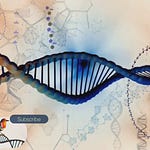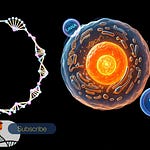Multispecific antibodies represent a radical leap beyond traditional monoclonal antibodies. While monoclonals bind a single epitope on a single antigen, msAbs can engage multiple targets, across different antigens, or even on entirely different cells.
This multi-targeting capability improves treatment specificity, reduces off-target toxicity, and enhances therapeutic efficacy across oncology, autoimmune diseases, infectious diseases, and even neurodegenerative disorders.
In the next 8 minutes, you’ll learn how msAbs work, why they’re transforming immunotherapy, and what the future holds for this revolutionary platform.
We will cover
So what makes msAbs so special?
Structural Scaffolds, Formats & Structural Engineering
How They Work – Mechanisms of Action
Manufacturing & Production Challenges
Clinical Applications & the real world impact
Challenges and Limitations
Next-Gen Technologies
The Future of msAbs
If you want a really deep dive into multispecific antibodies, check out our full article
Multispecific Antibodies (msAbs), A Complete Overview
🎧 Glossary: Key Terms in Multispecific Antibodies
🧬 Antibody (Ab):
A Y-shaped protein produced by the immune system that recognizes and binds to specific antigens, such as viruses or cancer cells.
🧪 Monoclonal Antibody (mAb):
An antibody that binds to a single specific epitope on one antigen. Widely used in diagnostics and therapy.
🔗 Multispecific Antibody (msAb):
An engineered antibody that binds to two or more different targets (epitopes or antigens), enhancing therapeutic function and precision.
🔄 Bispecific Antibody (BsAb):
A type of msAb that binds to two different targets. The most common msAb format, often used in cancer immunotherapy.
🔼 Trispecific / Tetraspecific Antibodies:
Advanced msAbs that can bind three or four targets simultaneously—useful in complex diseases like cancer or viral infections.
⚔️ T-cell Engager (TCE):
A bispecific antibody that binds both a T-cell (via CD3) and a tumor cell, redirecting the immune response to kill cancer cells.
🧠 Nanobody:
A small, stable antibody fragment derived from camelids. Ideal for tissue penetration, including the brain.
🔧 Knob-into-Hole (KiH) Technology:
An Fc-engineering method that forces two different heavy chains to pair correctly in a bispecific antibody—avoiding misfolding.
🔁 CrossMAb:
An antibody engineering approach where parts of the Fab region are "swapped" to ensure correct light chain pairing.
🧬 Glycoengineering:
Modifying the sugar structures on antibodies to enhance their stability, reduce immunogenicity, or improve function.
⚙️ Fc Region:
The tail of an antibody that interacts with immune cells. Engineering this region controls how the antibody functions in the body.
🧫 CHO Cells:
Chinese Hamster Ovary cells—a mammalian cell line widely used to produce therapeutic antibodies with human-like features.
💥 Cytokine Release Syndrome (CRS):
A potentially dangerous immune reaction caused by overactivation of immune cells, often a concern with T-cell engagers.
🧬 Epitope:
The specific part of an antigen that an antibody binds to.
💉 Antibody-Drug Conjugate (ADC):
An antibody linked to a drug, allowing targeted delivery of toxic payloads to cancer cells.













Share this post